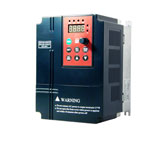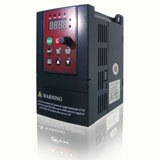VFD active filters meets IEE519 standard
Active Filters provide IEEE519 compliance and power factor correction. Currently most cost effective when applied at point of common coupling. As power devices and packing solutions mature from key suppliers we will see an uptick in use of these products. Many applications do not require active front end. Thus active filter is a worthy contender for IEE519 compliance.
Regarding active filters, one variable frequency drive or several does not really matter. In general the active filter is sized about 1/3 of the VFD. Thus, if it is a small drive the corresponding active filter might be too expensive compared to AFE or other alternatives. As the installation grows however, the economy of using active filters will improve significantly.
And it is no problem to have the output frequency higher than the input. The big issue with the matrix converter is the voltage limitation - 0.87 the input voltage available at the output if memory serves me correct. This is an issue for retrofitting in some applications.
The premise is that you would use a standard 6 pulse, fully rated VFD with the addition of a small, multiphase transformer and two additional rectifiers. The way this works is that 80% of the current flows through the VFD rectifier and 10% through each of the small rectifiers. Harmonic cancellation is based on amplitude and not on magnitude. Net result is you get 18 pulse cancellation at a very low cost since the transformer is very small in relation to the load. The packaging is such that everything fits in the same enclosure with three wires in and three wires out. No special motor leads are required. This configuration easily meets IEEE-519 and should meet the EU initiative handily.
Regarding active filters, one variable frequency drive or several does not really matter. In general the active filter is sized about 1/3 of the VFD. Thus, if it is a small drive the corresponding active filter might be too expensive compared to AFE or other alternatives. As the installation grows however, the economy of using active filters will improve significantly.
And it is no problem to have the output frequency higher than the input. The big issue with the matrix converter is the voltage limitation - 0.87 the input voltage available at the output if memory serves me correct. This is an issue for retrofitting in some applications.
The premise is that you would use a standard 6 pulse, fully rated VFD with the addition of a small, multiphase transformer and two additional rectifiers. The way this works is that 80% of the current flows through the VFD rectifier and 10% through each of the small rectifiers. Harmonic cancellation is based on amplitude and not on magnitude. Net result is you get 18 pulse cancellation at a very low cost since the transformer is very small in relation to the load. The packaging is such that everything fits in the same enclosure with three wires in and three wires out. No special motor leads are required. This configuration easily meets IEEE-519 and should meet the EU initiative handily.



